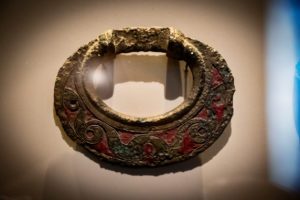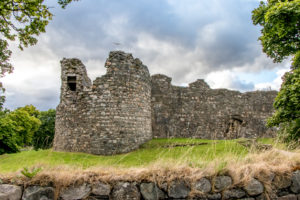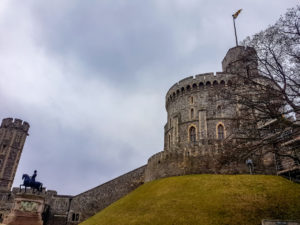Colchester Castle is a Norman castle in Colchester, Essex, England, dating from the second half of the eleventh century. The keep of the castle is mostly intact and is the largest example of its kind anywhere in Europe, due to its being built on the foundations of the Roman Temple of Claudius, Colchester. The castle endured a three-month siege in 1216, but had fallen into disrepair by the seventeenth century when the curtain walls and some of the keep’s upper parts were demolished; its original height is debated. The remaining structure was used as a prison and was partially restored as a large garden pavilion, but was purchased by Colchester Borough Council in 1922. The castle has since 1860 housed the Colchester Museum, which has an important collection of Roman exhibits.
The attribution of the castle as a royal foundation is based on a charter of Henry I dated 1101, granting the town and castle of Colchester to Eudo Dapifer “as my father had them and my brother and myself”, Henry’s father and brother being William I, “William the Conqueror”, and William II, “William Rufus”. The somewhat unreliable Colchester Chronicle, written in the late 13th century, credits Eudo with the construction of the castle and gives a commencement date of 1076. The design of the castle has been associated with Gundulf of Rochester purely on the basis of the similarities between Colchester and the White Tower at the Tower of London; however, both keeps also resemble the much earlier example at Château d’Ivry-la-Bataille in Upper Normandy.
Control of Colchester Castle reverted to the crown following the death of Eudo in 1120 and thereafter, the castle was governed by crown-appointed constables or was in the care of the High Sheriff of Essex when no-one had that role. In 1190, the acquisition of 26 military tunics for the castle is evidence of a permanent garrison. Kings Henry I, Henry II, and Henry III are all known to have visited the castle.
In 1214, the hereditary constable was William de Lanvalai, who was one of the barons opposed to King John. In November of that year, John arrived at Colchester, probably in an unsuccessful attempt to win over Lanvalai, who shortly afterward left the castle in the care of the sheriff and joined the other rebel barons at Bury St Edmunds. Meanwhile, John sent a replacement constable to Colchester, Stephen Harengood, who was probably a Flemish mercenary, with orders to improve the castle’s defenses. The barons later marched on London, forcing John to accept the Magna Carta at Runnymede in June 1215, which included a provision that Colchester be returned to Lanvalai. Within months, John had refused to be bound by the terms of the charter and the First Barons’ War broke out.
John besieged Rochester Castle before sending an army towards Colchester, under the command of a French mercenary called Savary de Meuleon. In the meantime, the barons had appealed for help to King Louis VIII of France, and accordingly, a French contingent had arrived to garrison Colchester Castle for the barons. The siege began in January 1216 and ended in March when King John himself arrived; the French garrison of 116 men were able to negotiate a safe passage to London. although that didn’t prevent them from being arrested there. Following the capture of Colchester, Harengood was reinstated as constable and made sheriff, but in 1217, the castle was handed over to the French and the barons as part of a truce agreement. However, it was recovered by the boy king Henry III in the Treaty of Lambeth in September 1217 which finally ended the war, and William of Sainte-Mère-Église, the Bishop of London, was made constable













